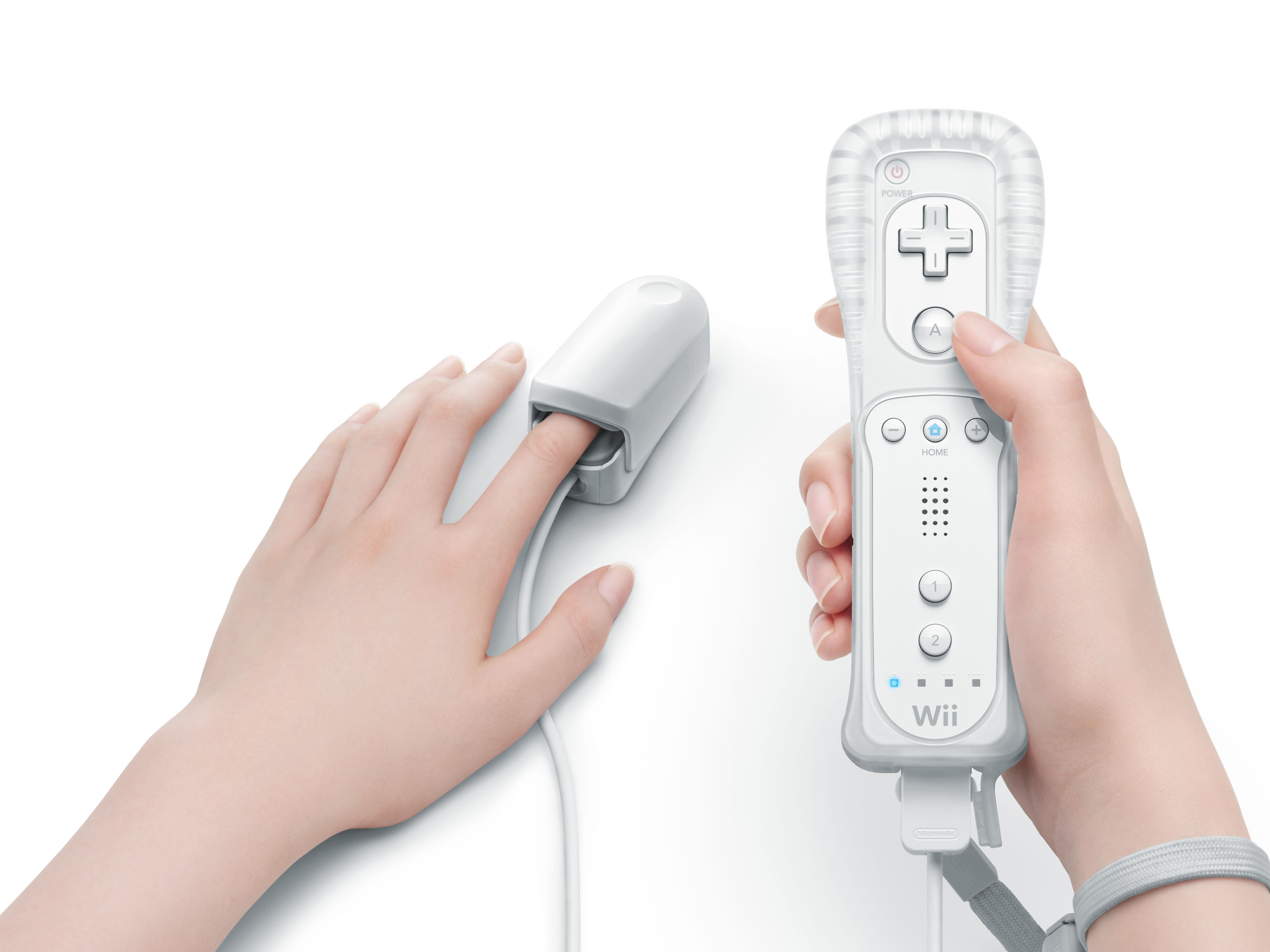Wii Vitality Sensor Axed Due to Inconsistant Test Results
Poor little guy never even had a chance to shine.
When Nintendo release Wii Fit in 2007, it sold millions of copies in the first few months of availability. The game was the brainchild of Shigeru Miyamoto who hoped it would help gamers get fit and track their health. When Nintendo announced the Wii Vitality Sensor four years ago, at E3 2009, the company built on Wii Fit's abilities to help gamers monitor the overall state of their health. It described the Vitality Sensor as a groundbreaking product that would check the user's pulse as well as other variables and provide them with feedback about their bodies.
Unfortunately, it seems Nintendo is giving up on the device before it ever made it to market. VG24/7 reports that Nintendo has confirmed that the Wii Vitality Sensor is on the way out. The company's reason for discontinuing the device was that they could never get it to provide consistent results. Well, that and the fact that it wasn't actually all that useful beyond checking your vitals.
"We have not been able to launch it as a commercial product because we could not get it to work as we expected and it was of narrower application than we had originally thought," Satoru Iwata is quoted as telling investors during a Q&A.
So, that's it for the Vitality Sensor unless technological advancements allow Nintendo to improve upon the product.
Get Tom's Hardware's best news and in-depth reviews, straight to your inbox.

Jane McEntegart is a writer, editor, and marketing communications professional with 17 years of experience in the technology industry. She has written about a wide range of technology topics, including smartphones, tablets, and game consoles. Her articles have been published in Tom's Guide, Tom's Hardware, MobileSyrup, and Edge Up.
-
InvalidError Which vitals would this thing check anyhow? Pulse could be monitored using electrodes embedded in the wiimote's grip. Temperature could be done more or less the same way by embedding thermocouples or diodes somewhere on the wiimote's body that almost always is in contact with the player.Reply
Blood pressure would be pretty difficult to get right on a finger/hand-mounted devices though - too much precision required and there likely is a lot more variance to how people's finger bloodflow change with pressure than arms. -
danlw Reply11117148 said:Developing cutting edge technology is not exactly nintendo's strong suit.
You mean like shoulder buttons (Nintendo first: SNES) rumble feedback (Nintendo first: N64), native 4-player functionality (Nintendo first: N64) save feature (Nintendo first: NES Legend of Zelda) 3-D games on home console (Nintendo first: SNES StarFox) handheld gaming (Nintendo first: Game Boy), (Nintendo First: 3DS), motion controls (Nintendo first: Wii)?
While Nintendo may not have invented each of these, they definitely made a mark and were the first to make these items popular. So much so, that everybody else plays catch-up with Nintendo. -
dextermat At least they had the decency to discontinue it instead of getting it out to the market and blame the users for the problems they are having (hahahahah your holding it wrong apple)Reply -
__-_-_-__ "Vitality Sensor Axed Due to Inconsistant Test Results"Reply
lol what? it was reporting dead people has alive? -
assasin32 Hate to break it to the person who wrote the article but that device doesn't check the persons pulse or any other vitals minus o2 levels in the person's body. It's a pulse oximeter. Not the most useful information to have either as having a patients pulse and blood pressure along with age/gender will provide more information for what they want to do. But in order to do that they would need to use more invasive devices.Reply
Realistically the device itself probably worked completely fine, these things have been around for awhile and are used frequently in the medical field. The issue they most likely encountered was that it's hard to keep a dice that's gently clipped to your finger on when your being physically active, which should have been a no brainer.
Realistically they would have been better off to include a heart rate monitor to try to teach people to keep in their target heart rate while being physically active. -
nevilence Reply11118450 said:Hate to break it to the person who wrote the article but that device doesn't check the persons pulse or any other vitals minus o2 levels in the person's body. It's a pulse oximeter. Not the most useful information to have either as having a patients pulse and blood pressure along with age/gender will provide more information for what they want to do. But in order to do that they would need to use more invasive devices.
Realistically the device itself probably worked completely fine, these things have been around for awhile and are used frequently in the medical field. The issue they most likely encountered was that it's hard to keep a dice that's gently clipped to your finger on when your being physically active, which should have been a no brainer.
Realistically they would have been better off to include a heart rate monitor to try to teach people to keep in their target heart rate while being physically active.
pulse oximeter does check heart rate >< in fact having worked as a nurse, i dont think I have used a pulse oximeter that didnt measure heart rate, mind you that said, im sure o2 saturation only oximeters probably exist
